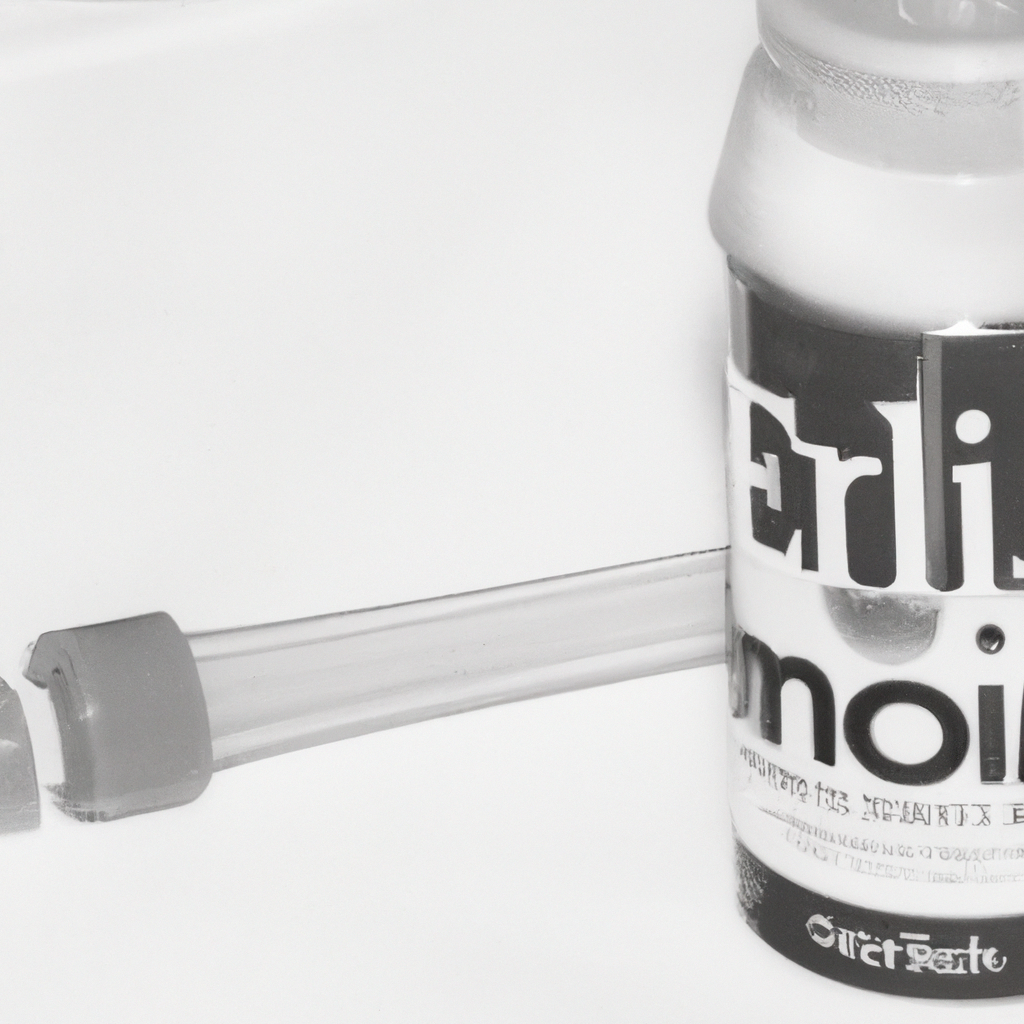Imagine a world where precious, life-saving breast milk is readily available for infants in need. Donor milk banks play a crucial role in making this vision a reality. However, with the increasing demand for donor milk, ethical considerations surrounding these banks are becoming ever more important. In this article, we will explore the ethical implications of donor milk banks and why they are a vital resource for infants in need.
Donor Milk Banks
Donor milk banks play a crucial role in providing human breast milk to infants in need. These institutions collect, screen, process, and distribute donated breast milk to ensure that babies who cannot receive their mother’s milk can still benefit from the numerous health advantages it offers. With the increasing recognition of the importance of breast milk and its unique ability to promote optimal growth and development, the establishment of donor milk banks has become an essential component of healthcare systems worldwide.
Definition
A donor milk bank is a specialized facility that collects, processes, and distributes donated human breast milk. It operates under carefully designed protocols to ensure the safety, quality, and accessibility of the milk. These banks work in collaboration with healthcare professionals, lactating mothers, and donors to meet the increasing demand for donor milk and ensure its suitability for infants in need.
Importance
Breast milk is widely regarded as the gold standard of infant nutrition, providing optimal nutrients, antibodies, and bioactive factors crucial for the growth and development of newborns. However, not all infants have access to their own mother’s milk due to maternal health issues, prematurity, or other circumstances. Donor milk banks play a vital role in providing these vulnerable infants with a safe and reliable alternative to their mother’s milk. By bridging the gap between a baby’s nutritional needs and the available resources, donor milk banks contribute to improved health outcomes and reduce the risk of complications for infants worldwide.
Purpose
The primary purpose of donor milk banks is to ensure that babies who cannot receive their mother’s milk can still benefit from the numerous advantages of breast milk. By collecting and processing donated breast milk, these banks aim to provide infants with a safe and nutritionally balanced feeding option. Additionally, donor milk banks serve as advocates for breastfeeding and milk sharing, raising awareness about the importance of breast milk and promoting its availability for those in need.
Ethical Considerations
In order to ensure the ethical operation of donor milk banks, several key considerations must be addressed. These considerations revolve around the principles of voluntary participation, informed consent, confidentiality, and privacy.
Voluntary Participation
One of the foundational ethical principles in donor milk banking is that participation should be entirely voluntary. Donors should not be coerced or pressured into sharing their breast milk. Donor milk banks must provide comprehensive information about the process, risks, and benefits associated with milk donation, allowing donors to make an informed decision based on their personal circumstances.
Informed Consent
Informed consent is a critical ethical requirement in milk banking. Donors must receive clear and accurate information about the purpose, use, and handling of their milk. They should also be made aware of any potential risks or limitations associated with milk donation. By providing donors with the necessary information, donor milk banks ensure that each donor understands and agrees to the terms of their participation.
Confidentiality and Privacy
Protecting the confidentiality and privacy of both donors and recipients is another significant ethical consideration in donor milk banking. Donor milk banks must adhere to strict protocols to ensure that all personal information, medical records, and identifying details are kept confidential and secure. Respecting the privacy of donors and recipients not only upholds ethical principles but also fosters trust and encourages continued participation in the milk sharing process.


Screening and Testing
To ensure the safety and quality of donated breast milk, rigorous screening and testing protocols are implemented by donor milk banks. These protocols assess the eligibility of potential donors and evaluate the health and lifestyle factors that could impact the safety of the milk received by infants.
Donor Eligibility Criteria
Donor milk banks establish specific eligibility criteria to screen potential donors. These criteria typically include general health requirements, such as being free from infectious diseases and not consuming substances that could be harmful to infants. Additionally, donors are often required to have a sufficient supply of milk and be willing to commit to regular donation.
Health and Lifestyle Assessment
In addition to meeting the eligibility criteria, potential donors undergo a detailed health and lifestyle assessment. This assessment includes a comprehensive medical history review, evaluation of current medications, and an assessment of the donor’s overall health and well-being. By gathering this information, donor milk banks can identify any potential risks or contraindications to ensure the safety of the donated milk.
Medical Testing and Evaluation
To further ensure the safety of donated breast milk, donor milk banks conduct medical testing and evaluation of potential donors. These tests typically include screening for infectious diseases, such as HIV, hepatitis B and C, and syphilis. Additionally, donors may be required to provide blood samples for compatibility testing, ensuring that the milk is suitable for the intended recipients. By implementing these strict testing protocols, donor milk banks can minimize the risk of transmitting infectious diseases through donated milk.
Donor Milk Processing
Donor milk banks employ specialized processes to safely and efficiently handle donated breast milk. These processes include pooling and pasteurization, quality control measures, and proper storage and distribution practices.
Pooling and Pasteurization
Pooling and pasteurization are essential steps in the processing of donated breast milk. Pooling involves combining milk from multiple donors to create a homogeneous mixture, ensuring consistent nutritional content across batches. Pasteurization, a heat treatment process, is then applied to the pooled milk to inactivate potentially harmful bacteria and viruses while preserving the beneficial components of breast milk. By pooling and pasteurizing the donated milk, donor milk banks can achieve a standardized and safe product for infants.
Quality Control
Maintaining high-quality standards is paramount in donor milk banking. Donor milk banks implement rigorous quality control measures to ensure the safety and nutritional integrity of the milk. These measures typically include regular testing of the milk for microbiological contamination, nutritional profiling, and strict adherence to established protocols. By closely monitoring the quality of the milk, donor milk banks can provide infants with a reliable and consistent source of nutrition.
Storage and Distribution
Proper storage and distribution practices are crucial to maintaining the safety and integrity of donated breast milk. Donor milk banks employ specialized storage equipment and procedures to ensure the milk is stored at the appropriate temperatures and safeguards against contamination and spoilage. When distributing the milk, donor milk banks work closely with healthcare professionals to ensure that it reaches the intended recipients promptly and under optimal conditions.


Access and Allocation
Ensuring fair and equitable access to donated breast milk is of utmost importance in donor milk banking. To achieve this, consideration must be given to medical need, equitable distribution, and prioritization of infants based on their unique circumstances.
Medical Need
Donor milk banks prioritize infants with demonstrated medical need for donated breast milk. These infants may include prematurely born babies, those with specific health conditions, or those who are medically unable to receive their mother’s milk. By directing the available donor milk to those who require it the most, donor milk banks maximize the positive impact of their services.
Equitable Distribution
Equitable distribution of donated breast milk is a key ethical consideration for donor milk banks. To ensure fair allocation, donor milk banks work with healthcare professionals to develop guidelines and protocols that take into account the needs and circumstances of both donors and recipients. By adopting an equitable distribution model, donor milk banks strive to minimize disparities and ensure that all infants in need have access to donor milk.
Prioritization
In situations where the demand for donor milk exceeds the available supply, prioritization becomes necessary. Donor milk banks establish guidelines that outline the criteria for prioritizing infants. Factors considered in this process may include gestational age, medical condition, and the availability of alternative feeding options. By establishing clear guidelines for prioritization, donor milk banks can make informed decisions that maximize the benefits of the available donor milk.
Safety and Quality Assurance
Ensuring the safety and quality of donated breast milk is a top priority for donor milk banks. By implementing robust processes for pathogen detection and elimination, reporting adverse events, and continually striving for quality improvement, these institutions are committed to providing the best possible care for infants.
Pathogen Detection and Elimination
Donor milk banks employ stringent measures for pathogen detection and elimination to guarantee the safety of the milk. This includes thorough testing of donated milk for potential pathogens, such as bacteria and viruses, and heat-treated pasteurization to inactivate any harmful microorganisms. By employing multiple layers of pathogen detection and elimination, donor milk banks significantly reduce the risk of infection transmission through donated breast milk.
Adverse Events Reporting
Monitoring and reporting adverse events related to donated breast milk is an integral part of safety assurance for donor milk banks. Prompt reporting allows donor milk banks to identify and address any potential issues that may arise. By fostering a culture of transparency and accountability, adverse events reporting enables continuous improvement and ensures that infants receive the highest level of care.
Quality Improvement
Donor milk banks are committed to continuous quality improvement. By regularly reviewing processes, evaluating outcomes, and analyzing data, these banks can identify areas for improvement and implement necessary changes. Quality improvement initiatives may include staff training, updating protocols, or adopting new technologies to enhance the safety and quality of donated breast milk. Through these ongoing efforts, donor milk banks strive for excellence and strive to consistently provide the best possible care for infants in need.
Funding and Resource Allocation
The sustainability and operation of donor milk banks are heavily dependent on adequate funding and efficient resource management. Considerations such as public versus private funding, cost-effectiveness, and resource allocation play a crucial role in ensuring that donor milk banks can continue to meet the needs of infants and their families.
Public vs. Private Funding
Donor milk banks rely on a combination of public and private funding sources to support their operations. While public funding may come from government grants or supported healthcare programs, private funding can be obtained through donations, philanthropic organizations, or crowdfunding initiatives. A balance of public and private funding ensures that donor milk banks can maintain their services and reach the most vulnerable populations.
Cost-effectiveness
Ensuring the cost-effectiveness of donor milk banks is essential for their sustainability. These institutions must carefully manage their resources, including staff, infrastructure, and equipment, to maximize the impact of their services while minimizing costs. Through strategic planning and efficient utilization of resources, donor milk banks can continue to provide high-quality care to infants in need without compromising sustainability.
Resource Management
Effective resource management is critical for the successful operation of donor milk banks. This includes optimizing staffing levels, ensuring the availability of necessary equipment and supplies, and implementing efficient workflow processes. By carefully managing resources, donor milk banks can maintain their operations, expand their services, and continue to meet the demand for donated breast milk.
Public Perception and Education
Public perception of donor milk banks plays a significant role in their success and sustainability. Increasing awareness and understanding of the importance of breast milk, the process of milk donation, and the role of donor milk banks is vital in promoting a positive perception and building trust among potential donors and the general public.
Awareness and Understanding
Educating the public about the benefits of breast milk and the role of donor milk banks is crucial in fostering support and engagement. Donor milk banks undertake initiatives to increase awareness through various channels, such as social media campaigns, community outreach programs, and collaborations with healthcare professionals. By promoting awareness and understanding, donor milk banks can encourage a more supportive and accepting environment for milk sharing.
Media Influence
Media has a significant impact on public perception and plays a vital role in shaping attitudes towards donor milk banks. Donor milk banks engage with the media to disseminate accurate, evidence-based information about the benefits and safety of donated breast milk. Through proactive engagement and collaboration with the media, donor milk banks can help counter misinformation, dispel myths, and promote a positive image of their services.
Breastmilk Promotion
In addition to facilitating the availability of breast milk through donor milk banks, promoting breastfeeding itself is an essential aspect of their mission. Donor milk banks collaborate with healthcare professionals, lactation consultants, and community organizations to educate and support mothers in their breastfeeding journey. By promoting breastfeeding and providing resources and support, donor milk banks contribute to a culture that values and supports breastfeeding for the benefit of all infants.
Legal and Regulatory Framework
Donor milk banks operate within a legal and regulatory framework to ensure that they adhere to established standards and guidelines. Licensing and accreditation, regulatory oversight, and compliance and enforcement mechanisms are in place to guarantee the safety, quality, and ethical operation of these institutions.
Licensing and Accreditation
Donor milk banks typically undergo a licensing and accreditation process to ensure compliance with established standards of care. These processes ensure that donor milk banks meet specific requirements related to staff qualifications, equipment, safety practices, and quality control measures. By obtaining the necessary licenses and accreditations, donor milk banks demonstrate their commitment to maintaining the highest quality standards.
Regulatory Oversight
Regulatory oversight is essential to safeguard the health and well-being of infants receiving donated breast milk. Regulatory bodies establish guidelines, policies, and regulations that govern donor milk banks’ operation, ensuring compliance with national and international standards. Regular inspections and audits ensure that donor milk banks are operating within the established framework and make any necessary adjustments to their practices.
Compliance and Enforcement
Ensuring compliance with legal and regulatory requirements is critical in donor milk banking. Compliance mechanisms, such as regular audits, reporting requirements, and ongoing monitoring, enable regulatory bodies to evaluate the performance of donor milk banks and take appropriate enforcement actions when necessary. By upholding compliance standards, donor milk banks maintain public trust and ensure the safety and well-being of infants in their care.
Future Directions
Donor milk banks continue to evolve and advance to meet the changing needs of infants and their families. As healthcare systems and scientific understanding of breast milk expand, several future directions hold promise for the field of donor milk banking.
Advancements in Donor Milk Banking
Advancements in technology, such as improved testing methods, enhanced storage techniques, and innovative processing methods, have the potential to revolutionize donor milk banking. These advancements could lead to increased safety, efficiency, and accessibility of donated breast milk, further improving health outcomes for infants.
Research and Innovation
Continuous research and innovation are crucial to advancing the field of donor milk banking. By investing in research and conducting clinical trials, donor milk banks can contribute to the scientific understanding of breastfeeding, breast milk composition, and the long-term impact of donor milk on infant health and development. Through innovation, new solutions and practices can be developed to address the evolving needs of infants and their families.
Global Collaboration
Global collaboration among donor milk banks can lead to shared knowledge, best practices, and increased availability of donor milk. By networking and sharing resources, donor milk banks can collectively work towards standardizing protocols, improving access to training and education, and addressing common challenges. The establishment of global initiatives and collaborative partnerships will enable donor milk banks to make a more significant impact on infant health worldwide.
In conclusion, donor milk banks play a vital role in providing infants in need with access to human breast milk. Ethical considerations regarding participation, consent, and confidentiality guide the operation of these banks. Rigorous screening, testing, and processing protocols ensure the safety and quality of donated milk. Access and allocation considerations prioritize those with medical need and promote equitable distribution. Safety, quality assurance, and continuous improvement are key focuses of donor milk banks. Funding and resource allocation, public perception and education, and legal and regulatory frameworks contribute to the sustainability and effectiveness of donor milk banks. Looking ahead, advancements in technology, research and innovation, and global collaboration hold promise for the future of donor milk banking. Through these collective efforts, donor milk banks can continue to make a significant difference in the health and well-being of infants worldwide.
